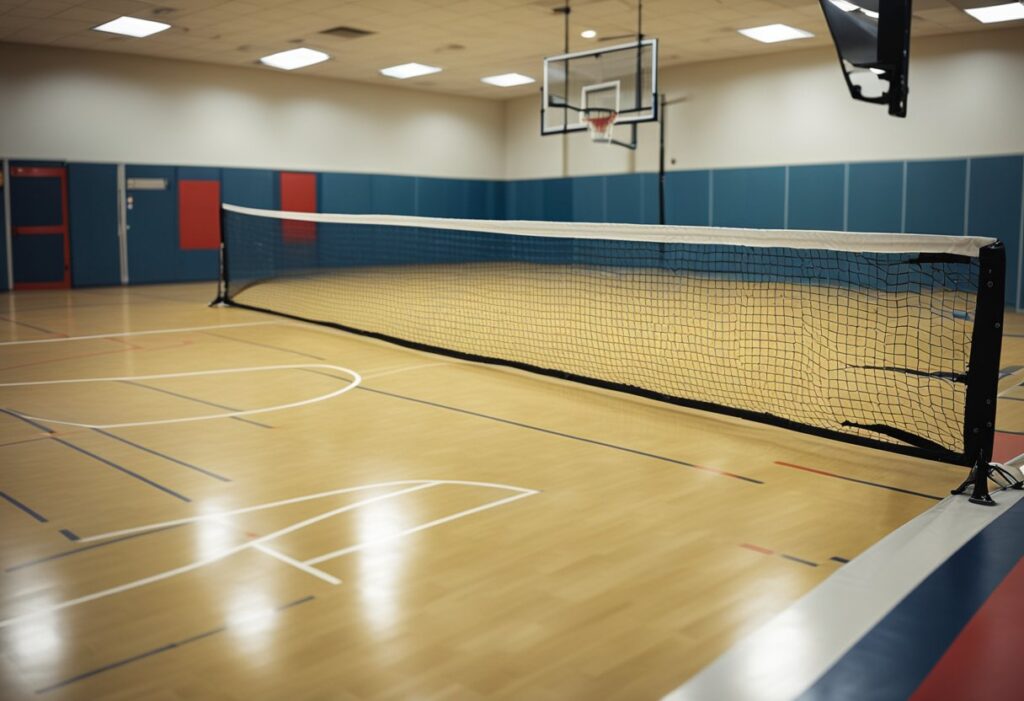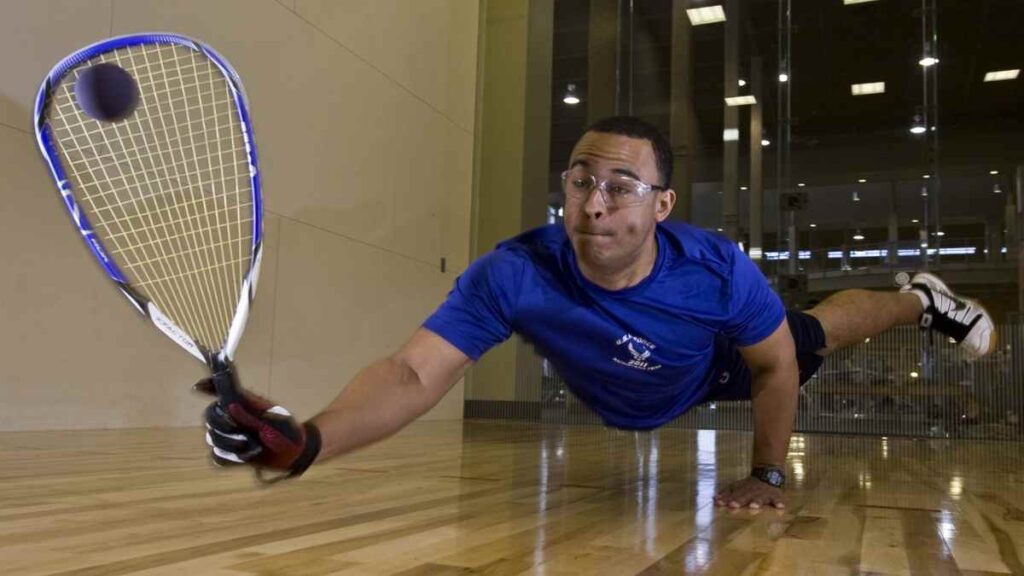So, you’re a racquetball player looking to take your game to the next level? Well, you’ve come to the right place! Fitness, training, and conditioning are all crucial components of becoming a successful racquetball player. Whether you’re a seasoned pro or just starting out, it’s important to have a solid understanding of what it takes to be at the top of your game.

First things first, let’s talk about fitness. Racquetball is a fast-paced sport that requires a lot of endurance and agility. You need to be able to move quickly and change direction on a dime. That’s why it’s important to incorporate exercises that focus on building your cardiovascular endurance and improving your agility. From sprints to plyometrics, there are plenty of exercises that can help you improve your fitness and take your game to the next level.
But fitness is just one piece of the puzzle. Training and conditioning are also essential for becoming a successful racquetball player. You need to have a solid understanding of the game and the skills required to excel. From mastering your swing to improving your footwork, there are plenty of techniques you can use to improve your game. And when it comes to conditioning, you need to focus on building muscular strength and enhancing your agility to minimize your risk of injury and maximize your on-court performance. So, let’s dive into the world of racquetball fitness, training, and conditioning and take your game to the next level!
The Art of Squatting and Lunging
Are you tired of feeling like a wet noodle on the racquetball court? Want to add some power and strength to your game? Look no further than the art of squatting and lunging.
The Power of Squats
Squats are a fantastic way to build lower body strength and power. They primarily work your quadriceps, but also engage your glutes, hamstrings, and calves. And let’s be real, who doesn’t want a nice booty?
To perform a squat, stand with your feet shoulder-width apart and your toes pointing slightly outward. Keep your chest up and your core tight. Slowly lower your body down as if you’re sitting in a chair, making sure your knees don’t go past your toes. Once your thighs are parallel to the ground, push through your heels to return to standing.
To really challenge yourself, try adding weight to your squats. You can use dumbbells, a barbell, or even a kettlebell. Just make sure to use proper form and start with a weight that’s comfortable for you.
Lunge Like a Pro
Lunges are another great exercise for building lower body strength and improving your racquetball game. They target your quads, hamstrings, glutes, and calves, while also improving your balance and stability.
To perform a lunge, start by standing with your feet hip-width apart. Take a big step forward with your right foot, keeping your knee directly above your ankle. Lower your body down until your right thigh is parallel to the ground, making sure your left knee hovers just above the floor. Push through your right heel to return to standing. Repeat on the other side.
To really feel the burn, try adding weight to your lunges. You can hold dumbbells at your sides or use a barbell across your shoulders. And if you’re feeling really adventurous, try doing walking lunges across the court.
So there you have it, the art of squatting and lunging. Incorporate these exercises into your training routine and watch as your power and strength on the racquetball court soar.
Racquetball Fitness and Cardio
So, you want to be a racquetball superstar? Well, you better get your fitness game on! Racquetball is a fast-paced sport that requires both endurance and speed. Luckily, there are a few ways to improve your fitness and cardio that will have you dominating the court in no time.
Running for Racquetball
Running is a great way to improve your endurance and cardiovascular fitness. It’s also a great way to get some fresh air and enjoy the great outdoors. But, let’s be real, running can be boring. So, why not spice it up a bit? Try adding some interval training to your running routine. This means alternating between periods of high-intensity running and periods of rest. Not only will this make your runs more interesting, but it will also improve your speed and endurance.
Cycling for Speed
Cycling is another great way to improve your cardiovascular fitness and speed. It’s also a low-impact exercise, which means it’s easier on your joints than running. If you’re looking to improve your speed, try adding some interval training to your cycling routine. This means alternating between periods of high-intensity cycling and periods of rest. You can also try hill training to improve your leg strength and power.
So, there you have it, folks! Running and cycling are two great ways to improve your fitness and cardio for racquetball. Just remember to start slow and gradually increase the intensity of your workouts. And, of course, don’t forget to have fun!
Strength Training and Conditioning
Are you tired of getting winded after just a few rallies on the racquetball court? Do you want to improve your strength and endurance so you can dominate your opponents? Look no further than strength training and conditioning.
Bench Press for Upper Body Strength
If you want to improve your upper body strength, the bench press is the way to go. Not only will it help you build up your chest and arms, but it will also give you the power you need to smash that ball across the court.
Here’s a quick breakdown of how to do a bench press:
- Lie down on a flat bench with your feet firmly planted on the ground.
- Grasp the bar with your hands shoulder-width apart.
- Lower the bar down to your chest, keeping your elbows tucked in.
- Push the bar back up to the starting position.
Pro tip: Make sure you have a spotter to help you out. You don’t want to get stuck under the bar like a turtle on its back.
Deadlifts for Lower Back
Your lower back is crucial for maintaining proper form and preventing injury on the racquetball court. Deadlifts are a great exercise for strengthening your lower back, as well as your hamstrings and glutes.
Here’s how to do a deadlift:
- Stand with your feet shoulder-width apart and the bar in front of you.
- Bend down and grasp the bar with your hands shoulder-width apart.
- Straighten your legs and lift the bar up, keeping your back straight.
- Lower the bar back down to the ground.
Pro tip: Start with a light weight and focus on proper form. You don’t want to throw out your back and end up watching from the sidelines.
With these exercises, you’ll be well on your way to becoming a racquetball powerhouse. Just remember to take it slow and steady, and always listen to your body. Happy lifting!
Mastering the Game
Congratulations, you’ve made it to the big leagues of racquetball! Now it’s time to take your skills to the next level and start mastering the game.
Shot Selection and Placement
One of the most important aspects of playing racquetball is shot selection and placement. You don’t want to just hit the ball aimlessly and hope for the best. You need to have a strategy in place and choose your shots wisely.
When it comes to shot selection, it’s important to consider your opponent’s position on the court, as well as your own. Are they standing in the back of the court? Then a lob shot might be a good option. Are they covering the front court well? Then try a passing shot to the back corner.
Placement is also key. You want to hit the ball where your opponent isn’t, and force them to move around the court. Aim for the corners and try to keep the ball low to the ground.
Rules and Strategies
Of course, shot selection and placement are only part of the equation. You also need to understand the rules of the game and develop effective strategies.
One important rule to remember is that you must win by two points. This means that if the score is tied at 10-10, you must continue playing until one player has a two-point lead.
When it comes to strategy, there are a few things to keep in mind. First, try to maintain control of the center of the court. This will give you the best position to hit a variety of shots and force your opponent to move around more.
Second, don’t be afraid to mix up your shots. Use a combination of lobs, passing shots, and kill shots to keep your opponent guessing. And finally, always be aware of your opponent’s position on the court and adjust your strategy accordingly.
With these tips in mind, you’ll be well on your way to mastering the game of racquetball. So get out there, have fun, and remember to always bring your A-game!




